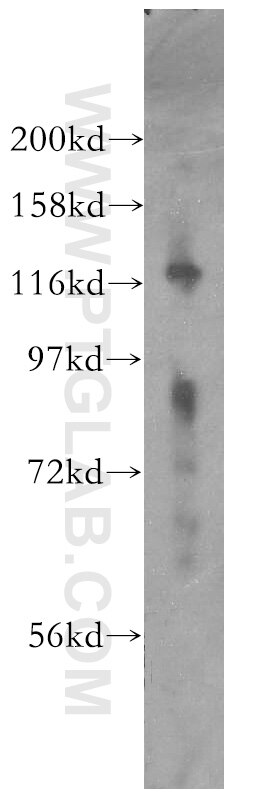Anticorps Monoclonal anti-HDAC4-specific
HDAC4-specific Monoclonal Antibody for ELISA
Hôte / Isotype
Mouse / IgG1
Réactivité testée
Humain
Applications
ELISA
Conjugaison
Non conjugué
CloneNo.
4C3B9
N° de cat : 60105-1-Ig
Synonymes
Galerie de données de validation
Informations sur le produit
60105-1-Ig cible HDAC4-specific dans les applications de ELISA et montre une réactivité avec des échantillons Humain
| Réactivité | Humain |
| Hôte / Isotype | Mouse / IgG1 |
| Clonalité | Monoclonal |
| Type | Anticorps |
| Immunogène | Peptide |
| Nom complet | histone deacetylase 4 |
| Masse moléculaire calculée | 119 kDa |
| Numéro d’acquisition GenBank | BC039904 |
| Symbole du gène | HDAC4 |
| Identification du gène (NCBI) | 9759 |
| Conjugaison | Non conjugué |
| Forme | Liquide |
| Méthode de purification | Purification par protéine G |
| Tampon de stockage | PBS with 0.02% sodium azide and 50% glycerol |
| Conditions de stockage | Stocker à -20°C. Stable pendant un an après l'expédition. L'aliquotage n'est pas nécessaire pour le stockage à -20oC Les 20ul contiennent 0,1% de BSA. |
Informations générales
HDAC4, also named as HDACA, belongs to the histone deacetylase family. HDAC4 is responsible for the deacetylation of lysine residues on the N-terminal part of the core histones (H2A, H2B, H3 and H4). Histone deacetylation gives a tag for epigenetic repression and plays an important role in transcriptional regulation, cell cycle progression and developmental events. Histone deacetylases act via the formation of large multiprotein complexes. HDAC4 is Involved in muscle maturation via its interaction with the myocyte enhancer factors such as MEF2A, MEF2C and MEF2D. This antibody is a mouse monoclonal antibody raised against a peptide mapping within human HDAC4.


